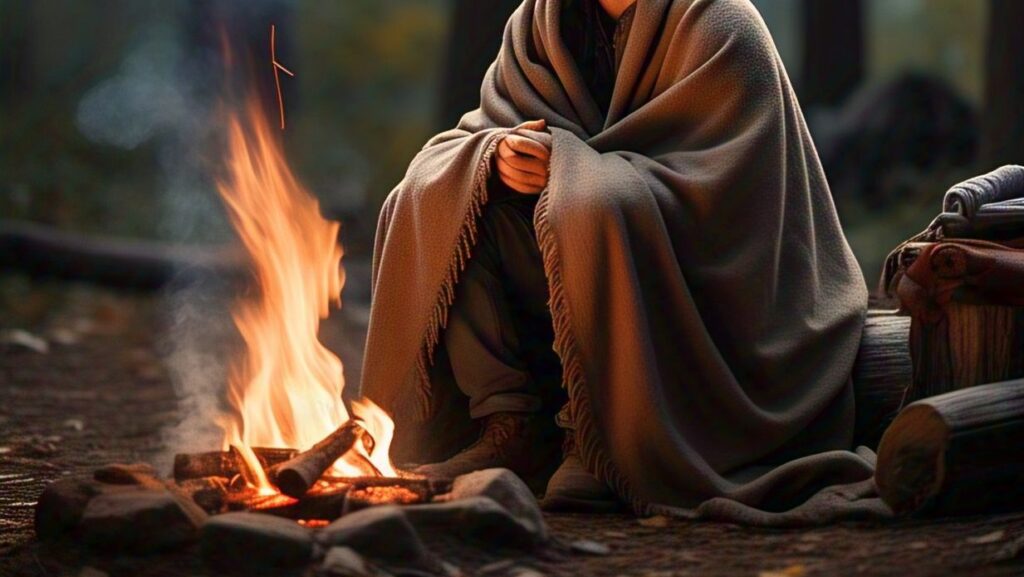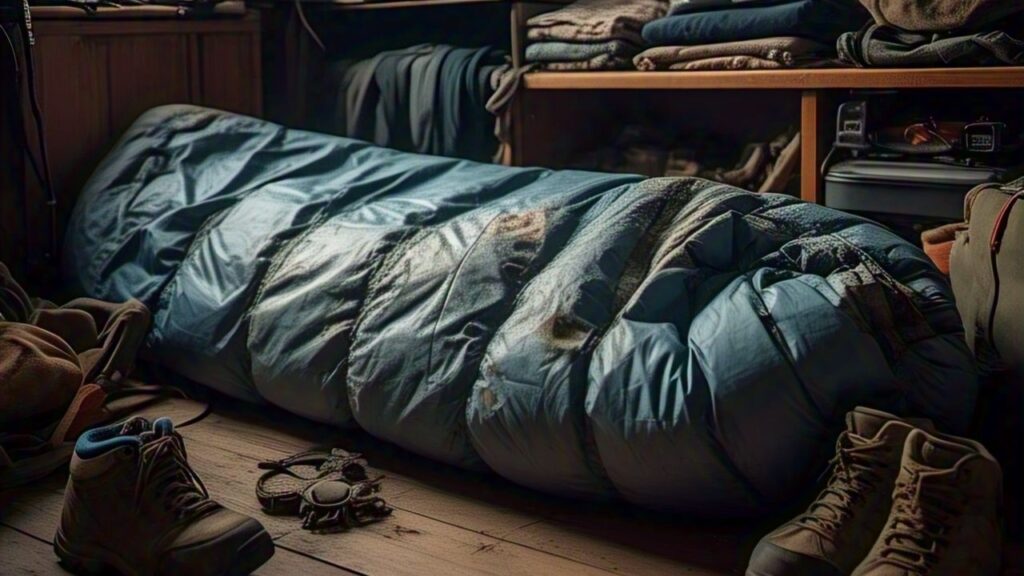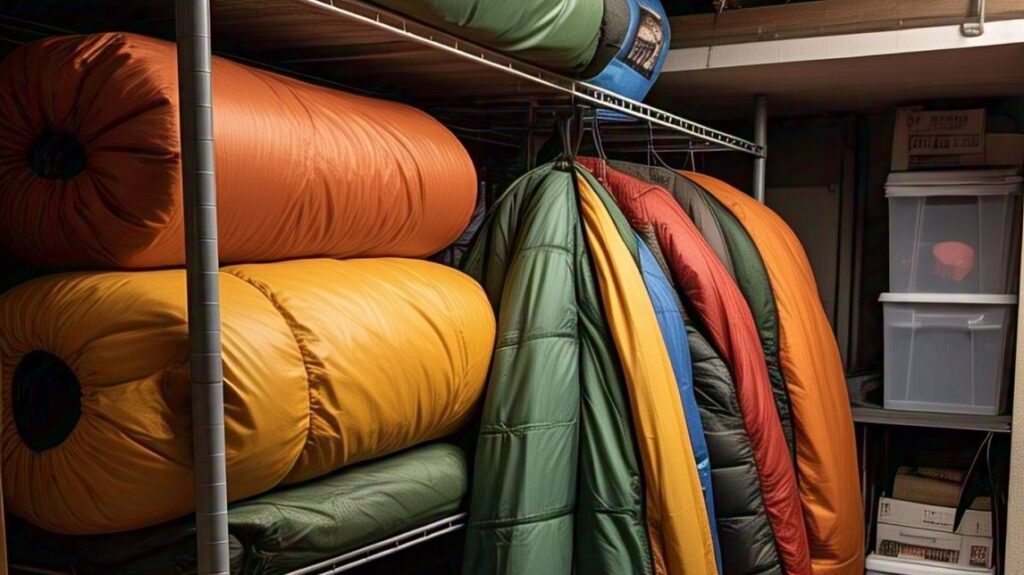Thesis Statement
We analyzed 331 sleeping bags from Amazon, here are the best ones.
First of all, we shortlisted the sleeping bags to 50 by Rating Strength.
Then we used a formula that calculates the value of a sleeping bag in form of a score based on its features and price.
The higher the score, the more features it provides per dollar, hence, being more valuable.
Note, more valuable does not mean more features. In fact, it is the exact opposite if you look at the list we curated.
If you want further details on how we curated the list, you can take a look at this section.
Disclaimer: The values and scores mentioned in this article are true as of May 8th, 2025. Any changes, including but not limited to price, can render the values inaccurate. This study was done to give you an idea of what kind of features you can expect in a sleeping bag within certain price brackets.
Our Best Value Picks
Clicking on Product Name Redirects to Amazon. Clicking on “Check More Details” Redirects to that Product’s Section Within the Article.
Product | Details | Best For | Temp Rating | Weight |
|---|---|---|---|---|
Best Value Overall/Budget | 50°F (10°C) | 3 lbs (1.36 kg) | ||
Best for Casual Campers | 5 °F (-15°C) | 4.1 lbs (1.9kg) | ||
Decent 3 Season Bag | 15 °F (–9 °C) | 2.89 lbs (1.31 kg) | ||
Good for Cold-Weather | 0°F (–18°C) | 4 lbs (1.81kg) | ||
Best Value above $300 | 32 °F (0 °C) | 16 oz (453 g) |
Best Value Overall
The MalloMe sleeping bag is a budget-friendly option best for mild weather camping. It offers solid comfort, roomy space, and easy packing for casual use.
Value Score: 89.04
Key Features
- Temperature Rating: 50–77 °F (10–25 °C) Ensures comfort across spring to fall in 3‑season use.
- Fill Power: Not Applicable, Synthetic design sidesteps down fill‑power metrics.
- Weight: 3 lbs (1.36 kg) Ultra‑light balance of warmth and portability.
- Packed Size: Compresses into included sack (16″ x 9″ [40.6cm x 22.8cm]) for space‑saving carry.
- Insulation Type: 3D synthetic fiber fill Delivers consistent loft and moisture‑resistant warmth.
- Shell Material: Waterproof Hex‑Tech Polyester, Dual‑layer, S‑stitch shell repels moisture and boosts durability.
- Fit & Shape: Rectangular shape maximizes interior room for unrestricted movement.
- Zipper Features: Double‑sided snag‑free zipper offers versatile ventilation and smooth entry/exit.
- Other Features: Adjustable drawstring headrest, Velcro securing strap, Compression sack & Machine‑washable shell, Customizes warmth, locks zipper, packs compactly and cleans easily.
Pros & Cons
Pros:
- Easy Packing & Storage: Rolls up compactly into the included sack, making setup and teardown a breeze.
- Spacious & Roomy: Generous interior allows side‑sleepers and taller users (up to ~6’3″) plenty of wiggle room.
- Comfortable Warmth: Keeps most users cozy on overnight trips down to ~50 °F without needing extra layers.
- Adjustable Fit: Drawstring “hood” and velcro strap let you tighten around your head for added warmth.
- Durable Construction: Sturdy polyester shell and reliable double‑sided zippers hold up to repeated use and machine washing.
- Lightweight Versatility: At ~3 lbs, doubles as a travel blanket or airport nap bag—ideal for both camping and casual use.
- Great Value: High‑quality feel and performance at a budget‑friendly price point, praised by multiple reviewers.
- Kid‑Approved: Vibrant colors and roomy design make it a hit for sleepovers and family outings.
Cons:
- Zipper Durability: Several users report broken or snag‑prone zippers after minimal use.
- Width Runs Narrow: Actual interior width (~31.5″) can feel snug, especially for adults used to full‑size bags.
- Drafty Seams: Some campers needed extra blankets to block cold air leaking at the zipper.
- Inconsistent Waterproofing: Reports of moisture seeping in during damp conditions despite shell claims.
- Flimsy Compression Straps: Plastic ladder‑lock buckles on the stuff sack are prone to cracking.
- Variable Fill Distribution: Occasional clumping or thin spots in synthetic fill affect insulation consistency.
- Chemical Odor: New‑bag smell can be strong; pre‑washing and airing out often required.
- Bulkier Than Expected: Even compressed, may be too large for ultralight or space‑crunched backpacking.
Note: These Pros & Cons were determined based on user review trends and/or latent consensus.
Our Take
A solid, budget‑friendly 3‑season bag that excels at comfort and convenience.
Buy If:
- You need a roomy, easy‑packing sleeping bag for spring–fall camping or travel.
- You value adjustable warmth (drawstring hood + double‑sided zipper) and machine‑washable convenience.
- You want a versatile, kid‑approved bag that doubles as a travel blanket or sleepover staple.
Don’t Buy If:
- You plan to camp in temperatures below 50 °F, or expect true cold‑weather performance.
- You’re chasing ultralight or ultra‑compact backpacking gear (sub‑3 lb, < 70 in² packed).
- You demand rugged, long‑lasting hardware (zippers and compression straps).
In short, the MalloMe sleeping bag offers unbeatable value for casual adventurers who prioritize comfort and easy maintenance in moderate climates, but serious cold‑weather or weight‑sensitive backpackers should look elsewhere.
Best Value in $50 to $100
A budget-friendly mummy bag with solid warmth, soft materials, and smart features—great for casual 3-season camping. Best for users under 6 ft who don’t mind a snug fit.
Value Score: 44.11
Key Features
- Temperature Rating: +5 °F (–15 °C) for cold-weather camping.
- Fill Power: Not Applicable for synthetic material.
- Weight: 4.1 lbs (1.9kg) for decent warmth-to-weight ratio.
- Packed Size: 14″ x 9.5″ (35.5cm x 24.1cm) for a small carry.
- Insulation Type: Microfiber insulation (high loft and compressibility)
- Shell Material: Ripstop nylon (tear- and water‑resistant)
- Fit & Shape: Mummy shape (contoured hood seals in warmth)
- Zipper Features: Full‑length zipper with draft tube (prevents drafts, avoids snagging)
- Other Features: Vaulted footbox, three‑piece hood, interior pocket, compression sack, hang loops (extra room, head‑to‑toe warmth, secure storage, easy transport, loft maintenance)
See more details about this sleeping bag like scorecard.
Pros & Cons
Pros:
- Ultra-Compact Packability: Stuffs down to claimed size for easy transport and fits most backpack compartments.
- Exceptional Warmth: Keeps users comfortable in the low 20s °F (−6 to −4 °C) with minimal layering on a pad.
- Vaulted Footbox: Extra insulation and room prevent cold toes and accommodate varied foot sizes.
- Soft, Traction Liner: Brushed interior moves with you, reducing bunching and boosting comfort.
- Sturdy Hood Drawcord: Cinches tightly without stress or breakage, sealing in heat around head and face.
- Value Pricing: Delivers synthetic loft, warmth, and a lifetime warranty well below competing bags.
- Interior Pocket & Hang Loops: Keeps essentials close and preserves loft during off-season storage.
Cons:
- Zipper Snags: Frequent catches on inner baffles slow entry/exit and can feel frustrating.
- Hood Constriction: Single drawcord may leave gaps around face and limit pillow use.
- Re-Stuffing Difficulty: Compression sack opening is too tight, often requiring significant effort or extra help.
- Over-Rated Warmth: Comfort drops noticeably below mid-30s °F (1–2 °C); not genuinely +5 °F (−15 °C)-ready.
- Bulky & Heavy: At ~4 lbs (1.8 kg), it’s less suitable for extended or ultralight backpacking.
- Narrow Fit: Mummy shape can feel restrictive, especially for taller or broader users.
- Long-Term Durability: Some report seam splits and zipper failures after extended use.
Note: These Pros & Cons were determined based on user review trends and/or latent consensus.
Our Take
A solid, budget-friendly synthetic mummy bag for 3-season campers.
Buy If:
- You want good warmth down to the low 20s °F (−6 °C) on a pad
- You need a highly compressible bag for backpack pockets
- Cold feet are a problem and you like extra footbox insulation
- You appreciate a soft liner that moves with you and a snug hood
- You value bonuses like an interior pocket, hang loops, and a lifetime warranty
Don’t Buy If:
- You plan true +5 °F (−15 °C) use, comfort falls off below mid-30s °F (1–2 °C)
- You’re tall, broad-shouldered, or need more room to move
- You’re chasing ultralight weight or minimal bulk on long hikes
- You hate zipper snags or wrestling with a tight compression sack
- You need rock-solid durability for heavy, multi-year use
The TETON +5 °F sleeping bag punches well above its price with warmth, packability, and comfort features, ideal for weekend and car campers. Just know its zipper, fit, and long-term toughness lag behind higher-end bags.
Best Value in $100 to $200
A lightweight, packable 3-season mummy bag with solid warmth for near-freezing temps. Best for hikers needing comfort without bulk.
Value Score: 35.1
Key Features
- Temperature Rating: 15 °F (–9 °C) for cold to moderate weather camping.
- Fill Power: 650 FP (650 fill power) for decent warmth-to-weight ratio
- Weight: 2.56 lbs (1.16 kg) for lightweight carry.
- Packed Size: 11 in x 7.5 in (28 cm × 19 cm) for easy carry.
- Insulation Type: 80/20 duck down (hydrophobic treatment)
- Shell Material: 400T 20D ripstop nylon (DWR-coated)
- Fit & Shape: Mummy-style (ergonomic heat retention)
- Zipper Features: YKK anti-snag, water-resistant zipper
- Other Features: Internal stash pocket (secure hook-and-loop closure)
Pros & Cons
Pros:
- Reliable Warmth: Consistently keeps users cozy in near-freezing temps when others felt cold.
- Light & Compact: Packs down small and weighs under 3 lbs, easing long-distance hikes.
- Comfortable Fit: Mummy cut and hood design add snug warmth without restricting movement.
- Durable Quality: Holds up through repeated backpacking and tent-camping trips.
- High-Altitude Performance: Proven to work on Kilimanjaro and similar extreme-cold expeditions.
Cons:
- Thin Base Insulation: Minimal down under the bag leads to cold spots if sleeping pad is thin.
- Uneven Fill Distribution: Down can shift, leaving some baffles nearly empty over time.
- Optimistic Rating: Users find 15 °F claim generous, comfort limit closer to 40–45 °F.
- Packed Bulk: At 11 x 7.5 inches, it’s smaller than many but still larger than some ultracompact bags.
- Short: This is short version of the bag which is best for individuals only upto 5′ 6″ tall.
Note: These Pros & Cons were determined based on user review trends and/or latent consensus.
Our Take
Here’s our final take on the Hyke & Byke Quandary 15°F bag.
Buy If:
- You need reliable warmth in near-freezing (≈32–40 °F) conditions
- You want an ultralight, easily packable bag for long hikes
- You value a snug mummy fit with a hood for added heat retention
- You appreciate durable materials
Don’t Buy If:
- You’ll camp at or below true 15 °F without layering extra gear
- You need perfectly even down distribution across the bottom baffles
- You are taller than 5′ 6″ (Note: You can opt for longer version for few extra dollars)
Overall, the Quandary delivers an impressive warmth-to-weight ratio and packs down small, making it ideal for most 3-season adventures. Just be sure to pair it with a quality pad and moderate your temperature expectations for the coldest nights.
Check out more 3-Season Bags
Best Value in $200 to $300
The Kelty Cosmic 0 Ultra is a warm, compressible down sleeping bag built for cold-weather backpacking. Its high-quality materials and smart design offer great value for serious winter campers.
Value Score: 14.92
Key Features
- Temperature Rating: 0°F (–18°C) for cold-weather camping
- Fill Power: 800 FP (premium treated DriDown)
- Weight: 4 lbs (1.81kg) for decent carry weight
- Packed Size: Not explicitly mentioned.
- Insulation Type: 800 fill DriDown for high warmth-to-weight ratio
- Shell Material: 20D nylon shell for lightweight durability
- Fit & Shape: Mummy shape with natural-fit footbox for comfort
- Zipper Features: Dual sliding, locking zippers with anti-snag draft tube for adjustable venting
- Other Features: Trapezoidal baffle construction for better heat retention; PFC-free DWR repels water; internal stash pocket secures gear
Pros & Cons
Pros:
- Easy temperature control: Lets you vent the bag and use it as a quilt for temperature control.
- Versatile design: Doubles as a quilt, adding comfort and adaptability on varied trips.
- Zipper guide: Robust zipper guide with insulated baffle prevents snagging and ensures smooth operation.
- Lengthy: Generous length and loft comfortably fit users up to ~6’4” (193 cm).
- Small: Packs down relatively small in a compression sack, saving space in your pack.
- High-quality: Materials and construction feel durable and long-lasting.
Cons:
- Bulky: Puffy when laid out, which can take up more tent space than slimmer bags.
- No Compression Sack: Requires a separate compression sack to achieve minimal packed size.
- Premium: High price point may be steep for budget buyers.
Note: These Pros & Cons were determined based on user review trends and/or latent consensus.
Our Take
Lightweight warmth and versatility in one package.
Buy If:
- You camp in cold or below-freezing conditions.
- You need a bag that packs down small for backpacking.
- You like the option to unzip and use it as a quilt.
- You value snag-free, smooth zippers on a mummy bag.
Don’t Buy If:
- You camp in tight shelters and need a slim-profile bag.
- You’re on a tight budget and want to avoid extra costs (e.g., compression sack).
- You only camp in mild, warm-weather conditions.
The Kelty Cosmic 0 Ultra delivers top-tier warmth, easy temperature control, and excellent packability for serious cold-weather backpackers. Its premium build and versatile design justify the price, just be prepared for a bit more bulk and the added cost of a compression sack.
Best Value above $300
The Therm-a-Rest Hyperion 32°F is an ultralight, compact sleeping bag built for minimalist three-season backpackers. Best for mild nights and still sleepers who prioritize low weight over roominess.
Value Score: 11.49
Key Features
- Temperature Rating: 32 °F (0 °C) [also listed as “To 40 degrees” – source unclear]
- Fill Power: 900 FP hydrophobic down
- Weight: 16 oz (453 g) for lightweight backpacking
- Packed Size: 5.5 × 6 in (14 × 15 cm) for minimal bulk
- Insulation Type: Nikwax Hydrophobic Down
- Shell Material: Nylon
- Fit & Shape: Mummy shape for a snug fit up to 6 ft (183 cm)
- Zipper Features: Longer full-length zipper for easy entry and ventilation
- Other Features: Box baffle maximizes loft; SynergyLink Connectors attach to mattress; ThermaCapture Lining traps radiant heat; Responsible Down Standard Certified; includes storage & compression sacks
Pros & Cons
Pros:
- Feather-light carry: At just 16 oz (453 g), it barely adds weight to your pack.
- Ultra-compact: Stuffs down to 5.5″ x 6″ (14cm x 15.2cm), saving significant pack space.
- Soft, comfy lining: Users praise the feel against skin for better sleep.
- Ideal for minimalist sleepers: Snug mummy cut keeps draft out if you stay still.
Cons:
- Tight fit: Cramped for side- or restless sleepers.
- Marginal warmth at rating edge: May feel cold around 32 °F (0 °C).
- Insulation imbalance: 70 % fill on top can leave your back cooler.
- Compression sack durability: Straps may fail under heavy use.
Note: These Pros & Cons were determined based on user review trends and/or latent consensus.
Our Take
A go-to pick for ultralight backpackers who value packability over everything else.
Buy If:
- You need the lightest possible sleeping bag for fastpacking or thru-hikes
- You’re a still sleeper who stays mostly on your back
- You camp in mild three-season conditions (around 40 °F/4 °C and above)
- Minimal pack space is a top priority
Don’t Buy If:
- You move around a lot in your sleep or sleep on your side
- You regularly camp at or below the 32 °F (0 °C) rating and need extra warmth
- You prefer balanced insulation all around your body (e.g., hammock campers)
- You worry about gear straps and zippers holding up under heavy use
In short, the Hyperion 32 °F is unbeatable for weight-weenies and fair-weather hikers who sleep still, but restless sleepers or those facing damp, colder nights should look for a warmer, roomier option.
Buying Guide: How to Choose
What’s more important than finding a valuable bag is finding the one that fits your needs.
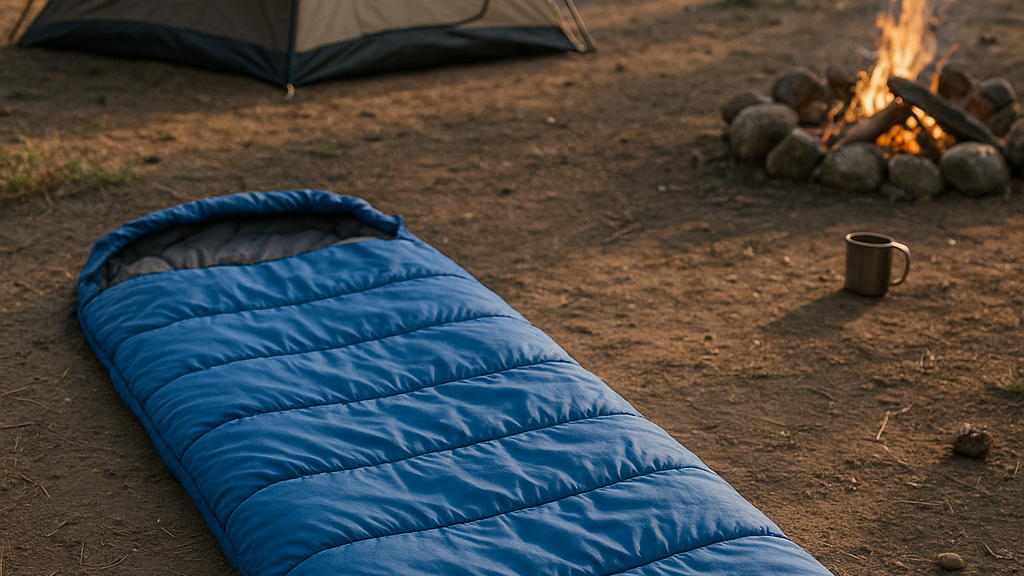
1. Insulation Type
Down insulation traps heat in tiny clusters, giving you top warmth-to-weight and folding down small.
It packs into tight spaces with ease. But if it gets wet, those clusters clump and lose loft, cutting warmth.
Synthetic fills cost less and keep insulating even when damp. They dry faster than down and stay loftier in wet conditions. The trade-off: they’re bulkier and heavier for the same warmth.
2. Temperature Rating
Sleeping bag labels follow ISO/EN tests. They list three temps:
- Comfort: When an average woman sleeps warm.
- Lower Limit: When an average man sleeps without feeling cold.
- Extreme: Risk zone before hypothermia.
To stay cozy, pick a bag rated about 10–15 °F below the coldest night you expect. That cushion guards against gusts, wind chill, and sleepy wiggles.
3. Shape & Fit
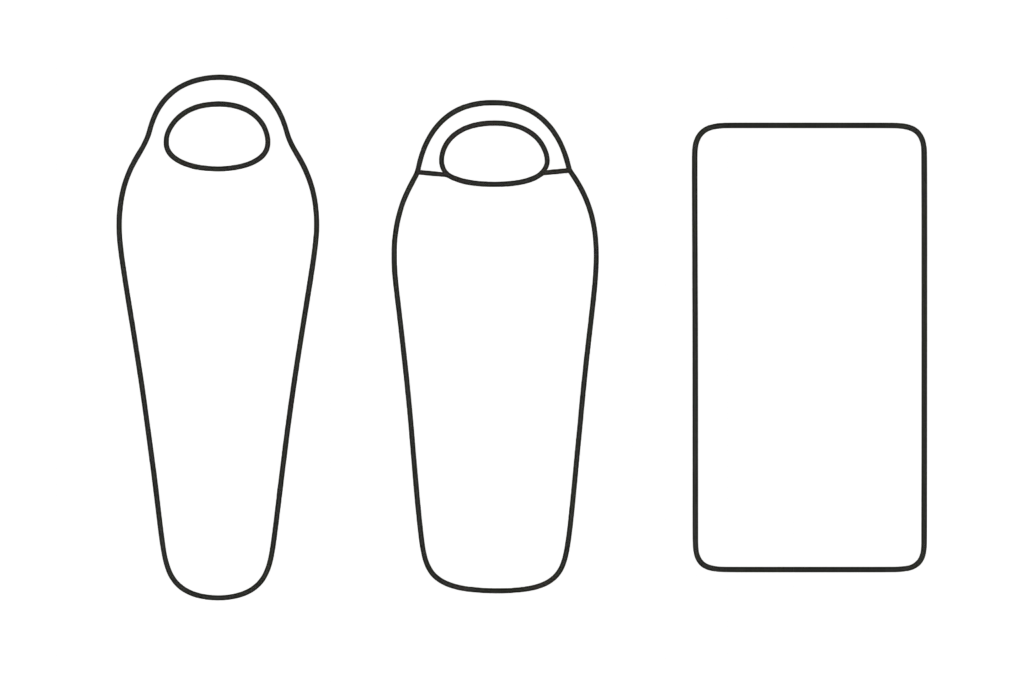
Mummy bags hug your body, cutting dead air space so you stay toasty. They’re light and compact but feel snug.
Rectangular bags give room to roll and move but add bulk and weight. They suit car camping or restless sleepers.
Semi-Rectangular bags are somewhere in between both Mummy and Rectangular bags.
Quilts drop the back insulation to save weight. You layer them over a pad and cinch them tight. They’re ultralight but need a good pad and tweaking for a draft-free seal.
4. Weight & Packed Size
On multi-day hikes, every ounce and inch of pack space matters.
A heavy, big bag limits what else you can carry. Look at both weight and how small the bag squeezes down.
If it barely fits inside, you might strap it outside, adding wind drag and swinging weight.
Balance pack volume with comfort needs.
5. Comfort & Gender-Specific Fit
Women’s bags often have narrower shoulders and more insulation around the torso, where women lose heat faster.
This keeps warmth where you need it.
Men’s or unisex bags have straight cuts that may leave gaps at the shoulders for a snugger fit.
Be sure to check the shoulder width and draft collar design to seal in heat.
Methodology Of The Analysis
We began by scraping Amazon for roughly 600 “sleeping bag” listings. After removing pads, kids’ bags, and other mismatches, we ended up with 331 true adult sleeping bags to analyze.
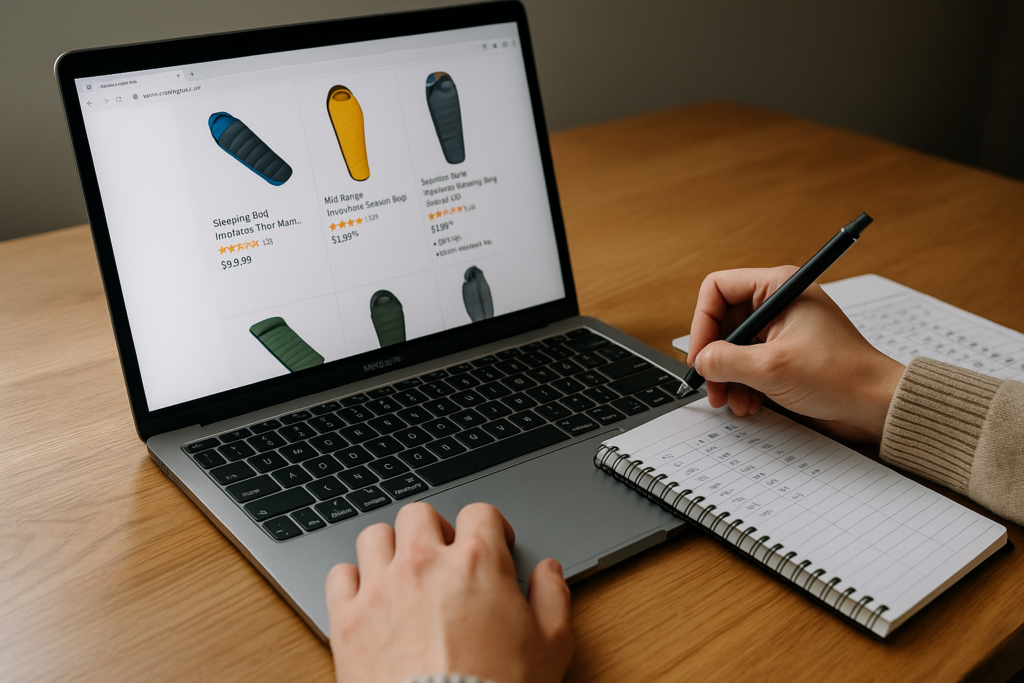
Next, we needed a way to compare them fairly. We built a Value Score based on each bag’s key features, then divided by price.
To keep scoring simple but meaningful, we turned each feature into a 1–10 scale (or a single bonus point):
Feature | How We Scored It |
|---|---|
Limit Temperature Rating | 0 °F → 10 points; 50 °F → 1 point; linear between; use comfort rating only if limit is missing. |
Insulation Type | Cotton = 3; Synthetic = 5; Down by FP: 500–599 = 6 … 900–999 = 10 |
Weight (lbs) | 1.5 lbs → 10 points; 5 lbs → 1 point; linear between. |
Shape & Fit | Rectangular = 5; Semi-rectangular = 7; Mummy = 10 |
Machine Washable | +1 point if yes |
Anti-Snag Zipper | +1 point if yes |
Two-Way Slider | +1 point if yes |
Draft Tube | +1 point if yes |
Hood w/ Drawstring | +1 point if yes |
Once we summed those points into a Feature Score, we divided by list price to get each bag’s Value Score—Higher always means more performance per dollar.
Since manually gathering every feature for 331 bags would take ages, we narrowed our focus using customer feedback:
- Split the 331 bags into five price brackets:
- <$50 (141 bags)
- $50–100 (100 bags)
- $100–200 (66 bags)
- $200–300 (15 bags)
- >$300 (9 bags)
- Within each bracket, we calculated a Rating Strength for every bag, This highlights well-reviewed, popular models:
Avg. Customer Rating × log10(Number of Ratings + 1)
- We shortlisted the top 10 bags by Rating Strength in each bracket (50 total), then manually confirmed all feature details.
- Finally, we ran our Value Score on those 50 and picked the highest-scoring bag in each price bracket as the Best Value.
That mix of objective feature scoring plus real-world user feedback ensures our picks give you the most bang for your buck—no fluff, just clear, data-driven choices.
Important Notes
- Tight feature sets at the low end. Budget bags share nearly identical specs—small price shifts drive Value Score gaps.
- Features ≠ value. The bag with the lowest Value Score—Therm-a-Rest Hyperion—actually has the highest Feature Score among the five, proving more features don’t always boost bang-for-buck.
- Data vs. real-world testing. This analysis helps set expectations by price bracket but doesn’t replace hands-on field tests.
- Performance vs. value. If ultimate warmth and weight savings matter most, invest in a high-end bag rather than chasing peak Value Scores.
- Time-sensitive results. All scores and prices reflect data as of May 8, 2025. Any changes in cost or specs may affect these rankings.
Brand & Budget Spotlights
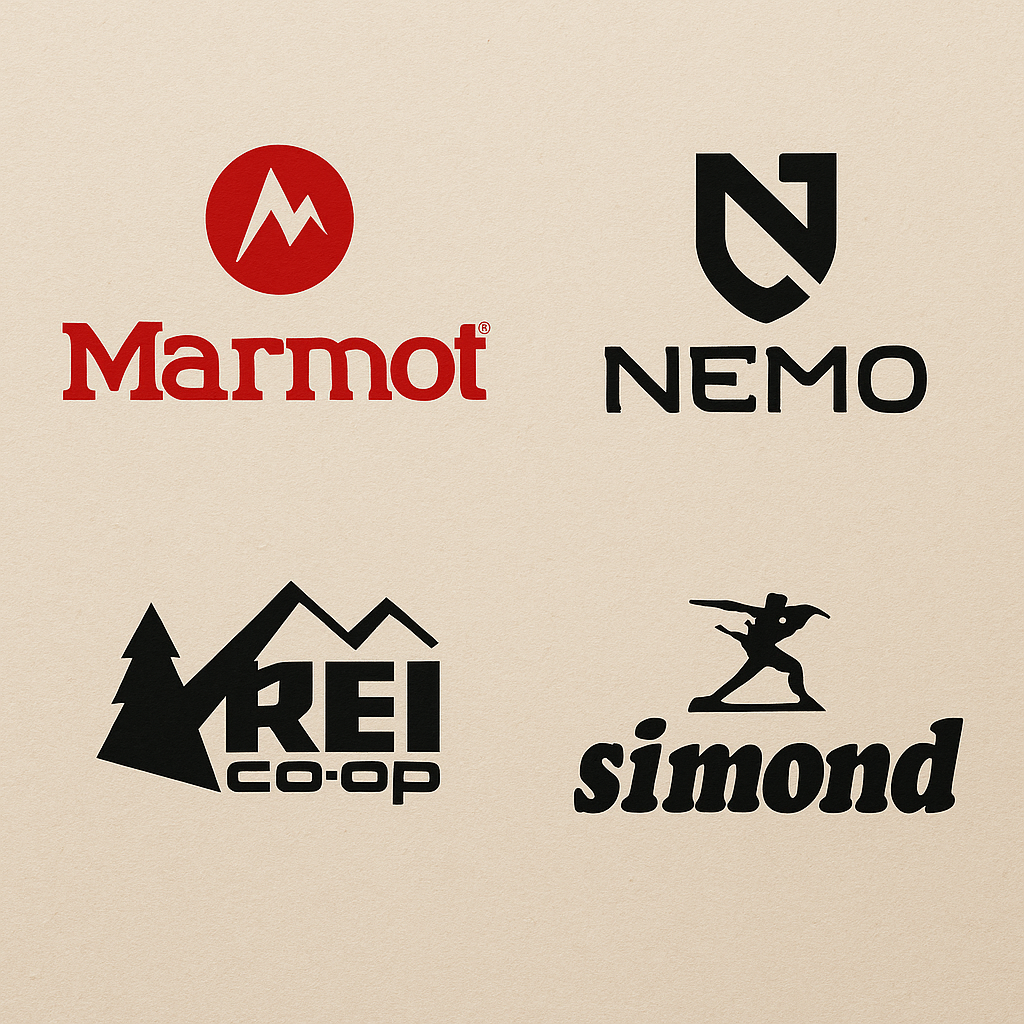
- Mountain Hardwear: Alpine-tested performance bags (e.g., Bishop Pass, Phantom series) built for serious mountaineering conditions.
- Marmot: Pioneers in down innovation—first to sew prototype Gore-Tex sleeping bags in 1976, setting the standard for wet-resistant warmth.
- Nemo: Mid-range, three-season down mummy bags with premium fabrics and a “spoon” shape for side sleepers (e.g., Disco™ 15).
- REI Co-op: Trailmade synthetic series offers inclusive sizing and moisture-resistant insulation—and members get extra discounts on gear.
- Decathlon (Simond MT500): Budget synthetic mummy bags with PFC-free shell, anti-pinch zippers, adjustable hood—rated comfort to –5 °C for $70–$140.
- The North Face: Renowned for high-altitude down bags like the Himalayan Suit (1994), engineered for extreme cold and mountaineering.
- Sea to Summit: Ultralight backpacking quilts and bags (Spark series) balancing minimal weight with technical warmth for thru-hikers.
- Therm-a-Rest: Innovators of integrated sleep systems—Questar and Questar UL down bags paired with insulated pads for versatile warmth.
Conclusion
All five of these sleeping bags earned their spots by giving you the most warmth, comfort, and handy extras for every dollar you spend.
Our simple score blends real user feedback with key specs, so whether you’re on a tight budget or splurging on top-end gear, you know exactly which bag delivers the best bang for your buck.
Remember, a high Value Score isn’t about having every feature, it’s about the right mix of warmth, weight, and extras for your budget.
You Might Also Like
Best High End Sleeping Bags for Camping!
Top 5 Sleeping Bags for Camping in Summer!
Frequently Asked Questions (FAQs)
How to Wash a Sleeping Bag?
Most synthetic bags are machine washable. Use a front-loading washer with cold water and a gentle, non-detergent soap. Tumble dry on low with clean tennis balls to restore loft.
For Down bags, use down-specific soap. Avoid top-loaders (agitators can damage the insulation). Dry thoroughly—down takes longer and can clump if not fully dry.
If only dirty in small areas, clean those with mild soap and a sponge to avoid unnecessary full washes.
Avoid Fabric Softeners and Bleach. They can break down the insulation or damage water-repellent coatings. Check out this article for more details.
Is Synthetic or Down Better?
Down: Lighter, more compressible, lasts longer, better warmth-to-weight ratio—but loses warmth if wet and costs more. Best for cold, dry climates and backpacking.
Synthetic: Cheaper, insulates when damp, dries faster—though bulkier and heavier. Great for wet conditions or budget-friendly camping.
Go down if you need high performance and can keep it dry. Choose synthetic for affordability or humid trips.
What Is a Zero-Degree Sleeping Bag?
A bag rated for 0°F (-18°C) temperatures, meaning it should keep you alive and functional at that temp.
Ratings assume you’re wearing base layers and using a proper sleeping pad. Don’t expect luxury warmth at 0°F, just survival-level insulation.
What Is a Hybrid Sleeping Bag?
Combines down and synthetic insulation to balance warmth, weight, and moisture resistance.
Usually: down in the upper body (for warmth and packability), synthetic in moisture-prone areas like the footbox or underside.
Great for variable conditions; lighter than full synthetic, more weather-resistant than full down.






